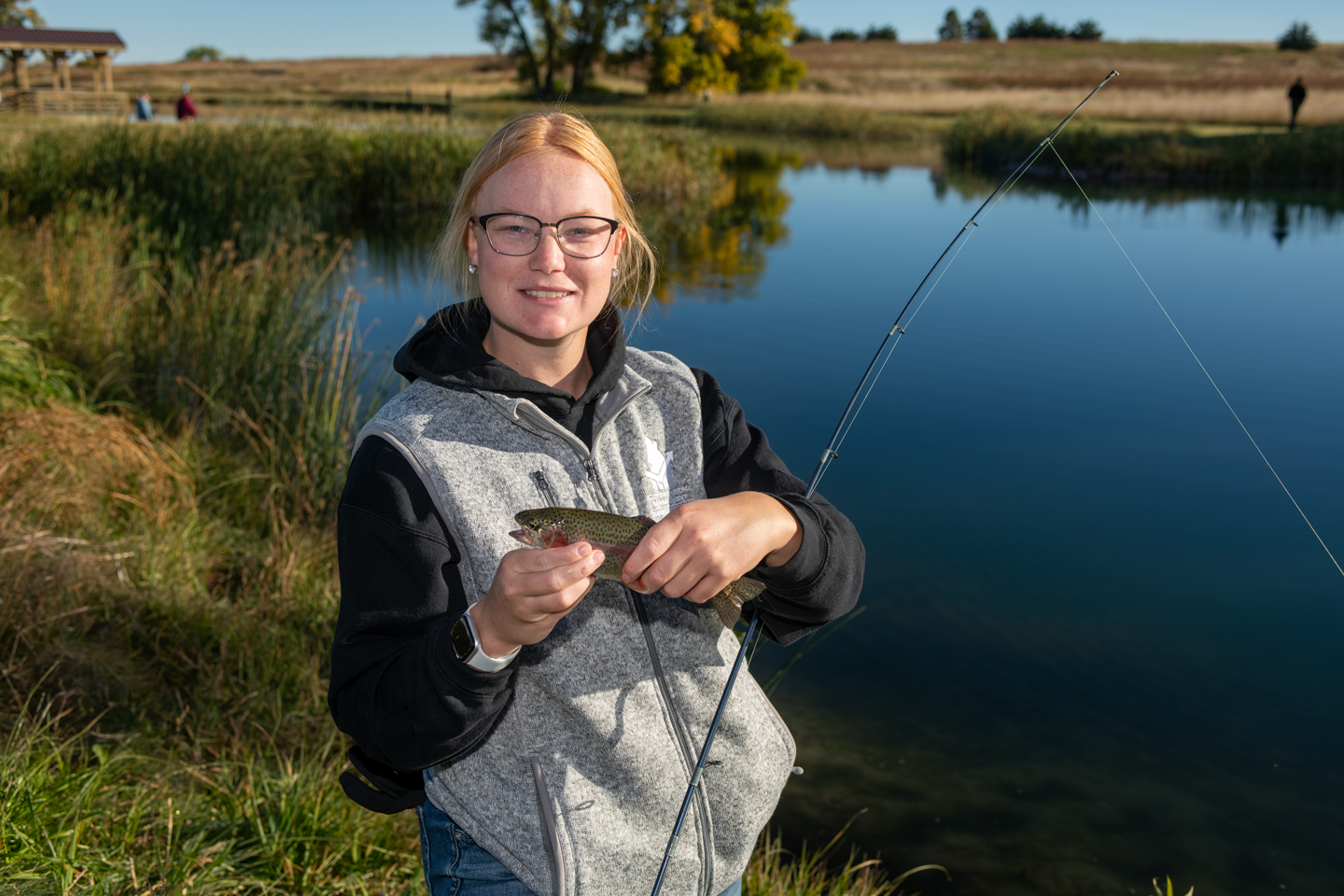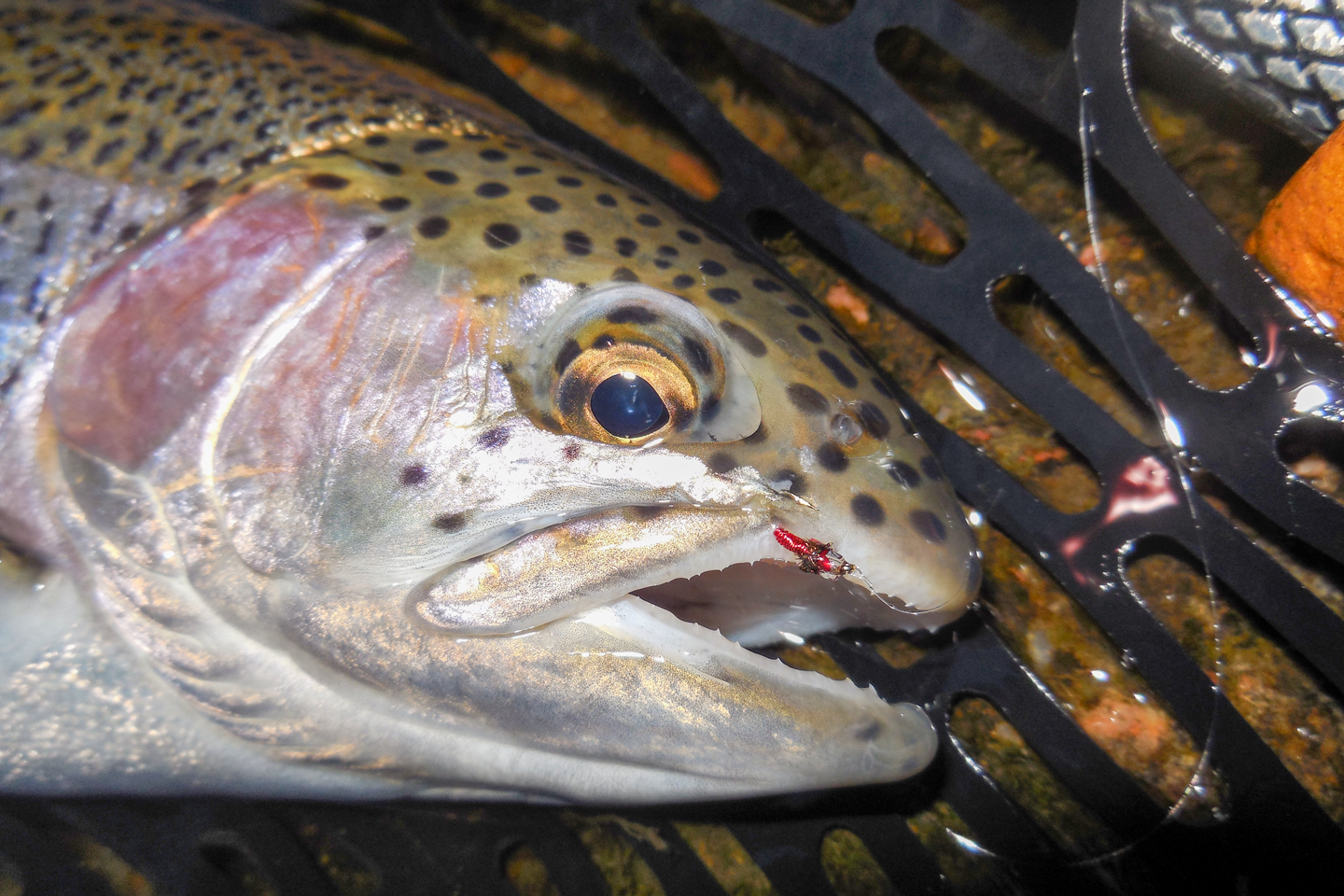
By Daryl Bauer
Recently blogged about the annual fall put-and-take trout stockings in urban and parks waters throughout Nebraska. That post was long enough as it was. Want to include more information here on catching those fish and then processing them.
The catchable-size, 10-inch rainbow trout that are being stocked have lived their entire lives in a fish hatchery. They are used to swimming around in a raceway or pond and having artificial feed dropped on top of them.
These fish are not rocket-surgeons.
I have seen them start biting as soon as they were stocked; in fact, I have seen them suck #12 Marlboro Butts off the surface as soon as they came off the hatchery truck. But usually, they will bite better after they have had a day or two to acclimate to their new environment.
Once they are stocked, they often cruise the shoreline or a drop-off like they would in a hatchery pond or raceway. Corners or points will tend to concentrate cruising fish. You will often find fish in the vicinity of the stocking location, too.
Trout have an excellent sense of smell and will sample a variety of baits as they try to figure out what is food and what is not. Nightcrawlers will work as well as commercially prepared baits. For example, there are a variety of PowerBait products made just for trout, and they will catch fish! Some folks like to try corn and cheese, and those will catch fish, too; so, will a variety of salmon egg baits from the local tackle shop.
If you are still-fishing, start near the bottom, but I would recommend getting your bait up a few inches to make it easier for the trout to find. You can use floating jig-heads to float your baits off the bottom or try adding a small marshmallow to your hook to float the bait and provide even more attraction.
Keep your eyes open as the trout may be cruising way above bottom at times and you will be able to spot those fish. Suspending baits below a float (i.e. “bobber”) would be another presentation to try especially if you see fish cruising higher in the water column.
The catchable-size rainbows are also curious especially as they are sampling new baits and learning what to eat. Besides appealing to their senses of smell and taste, use some color and flash to attract their attention. A good way to cover some water and find fish would be to throw small spinners, spoons, or crankbaits. Even if you cannot get trout to take those baits you can often see them chase and then you know they are present.
Even though the put-and-take rainbows have been raised on artificial feed, fly-anglers can get them to bite too. Initially, some wet flies or nymph patterns that just look “buggy” or have some bright attractive colors will get some curious fish to bite. Later on, after the trout have acclimated to their new environment, they will begin to feed on aquatic insects and other prey items found in the waters in which they were stocked. Fly anglers know to imitate those natural food items. Keep your eyes open on warm afternoons as those rainbows will take advantage of insect hatches that occur (likely some type of midge).

What to do with them?
My preference for any trout or salmon would be smoked! If I chose to harvest a trout, I just field-dress it, removing the gills and “guts,” leaving the head and fins on the fish. I brine my trout overnight in a brine I mix to taste with water, a lot of brown sugar, some salt, lemon juice and garlic. After brining, I rinse ’em and throw ’em on the smoker. Once they are done, peal the skin back and start eating! Put some chunks on crackers if you want or just dig in!
Final thoughts
The catchable-size rainbows are being stocked in heavily fished urban and parks waters around the state because we want folks to get out this fall and GO FISH! This stocking strategy is called “put and take” because we expect folks to take or harvest most of the rainbows we stock. In fact, if folks are not harvesting at least 80% of those catchable-size rainbows, then we are not getting enough use on those waters.
We do not stock these catchable-size rainbows in parks and urban waters so a bunch of adults can come out and fill their freezers with trout! We do these stockings to provide some easy fishing opportunities, especially when the water is relatively cold, for kids and beginning anglers! Please find a kid, find someone who is not an angler and take them along to catch some of the put-and-take trout. Get ’em hooked!
